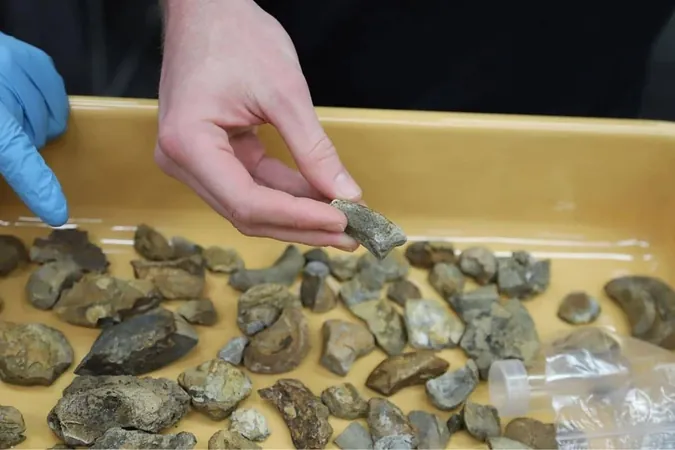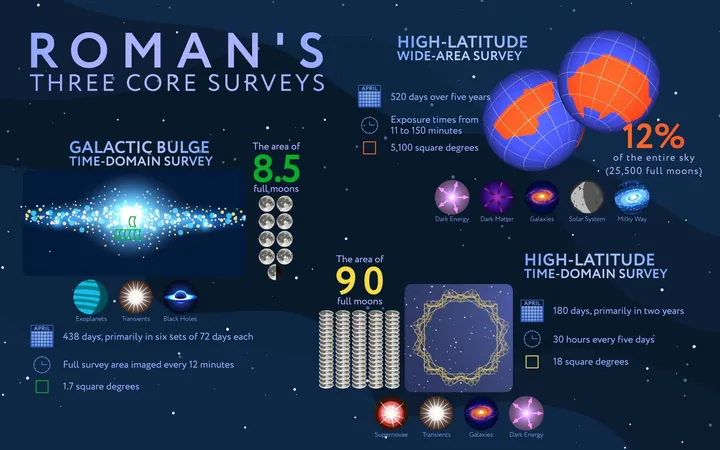
Unbelievable Discovery: Student Unearths 300-Million-Year-Old Gemstone Fossil that Defies Time
2025-04-13
Author: Amelia
A Jaw-Dropping Find in Oklahoma
An exciting discovery in Oklahoma is sending ripples through the paleontology world. A geology professor and his student have stumbled upon what might be one of the oldest and rarest gemstone-quality ammonite fossils ever found.
The Day Before Spring Break Turns Extraordinary
Just before spring break, Dr. Chris Shelton of Rogers State University took his eager student Kolby Dooling to a fossil-rich site they had explored before. What started as a routine excursion turned into a moment of sheer amazement when Dooling presented a stunning iridescent piece, signaling he had unearthed something truly remarkable.
A Shimmering Relic from the Ocean's Depths
This extraordinary fossil belonged to an extinct group of marine mollusks known as ammonites, which are the ancient relatives of today’s squids and octopuses. Unlike typical finds, this specimen glittered with gem-like vibrancy, hinting at a unique mineral composition.
The fossil’s shell glows with a captivating mother-of-pearl sheen, a quality attributed to aragonite, a mineral famous for its ability to diffract light. This stunning feature raises the possibility that it may qualify as true ammolite, a coveted gemstone typically found in Alberta, Canada.
Dating Back to a Time Before Dinosaurs
What makes this discovery even more astounding is its age. While most known iridescent ammonites hail from the Mesozoic Era—when the dinosaurs roamed—the fossil discovered by Dooling and Shelton dates back to the Carboniferous Period, a whopping 300 million years ago, long before dinosaurs ever walked the Earth.
This fossil is a rarity in the field, as similar specimens are usually found in far younger geological layers. Prior to this finding, the only other site that produced aragonite fossils from this ancient era was the Buckhorn Asphalt Lagerstätte in the Arbuckle Mountains of Oklahoma.
A New Expedition to Uncover More Ancient Wonders
Energized by their groundbreaking discovery, Shelton and Dooling have plans to return to the site for further exploration. They found additional fossilized remains, including ancient sharks and various invertebrates. Their mission now is to conduct detailed analyses and document their findings in a peer-reviewed journal.
"We’re committed to making more collection trips to gather more samples," Shelton remarked. "With our upcoming analytical tests, we aim to confirm our hypotheses and contribute to the scientific community with our findings."









 Brasil (PT)
Brasil (PT)
 Canada (EN)
Canada (EN)
 Chile (ES)
Chile (ES)
 Česko (CS)
Česko (CS)
 대한민국 (KO)
대한민국 (KO)
 España (ES)
España (ES)
 France (FR)
France (FR)
 Hong Kong (EN)
Hong Kong (EN)
 Italia (IT)
Italia (IT)
 日本 (JA)
日本 (JA)
 Magyarország (HU)
Magyarország (HU)
 Norge (NO)
Norge (NO)
 Polska (PL)
Polska (PL)
 Schweiz (DE)
Schweiz (DE)
 Singapore (EN)
Singapore (EN)
 Sverige (SV)
Sverige (SV)
 Suomi (FI)
Suomi (FI)
 Türkiye (TR)
Türkiye (TR)
 الإمارات العربية المتحدة (AR)
الإمارات العربية المتحدة (AR)